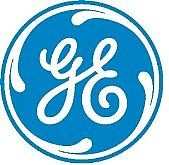Methods for Synchronizing Mammalian Cells
互联网
625
When studying cell cycle checkpoints, it is often very useful to have large numbers of cells that are synchronized in various stages of the cell cycle. A variety of methods have been developed to obtain synchronous (or partially synchronous) cells, all of which have some drawbacks. Many cell types that attach to plastic culture dishes round up in mitosis and can then be dislodged by agitation. This mitotic shake-off method, originally discovered by Terasima and Tolmach (1 ), is useful for cells synchronized in metaphase, which on plating into culture dishes move into G1 phase in a synchronous manner. A drawback to the mitotic shake-off method is that only a small percentage (2–4%) of cells are in mitosis at any given time, so the yield is very small. Also, cells rapidly become asynchronous as they progress through G1 phase, so the synchronization in S phase and especially G2 phase is not very good. The first limitation can be overcome by plating multiple T150 flasks with cells, using roller bottles, or blocking cells in mitosis by inhibitors such as Colcemid or nocodazole (2 ). Mitotic cells that are collected can be held on ice for an hour or so while multiple collections are done to obtain larger numbers of cells.









